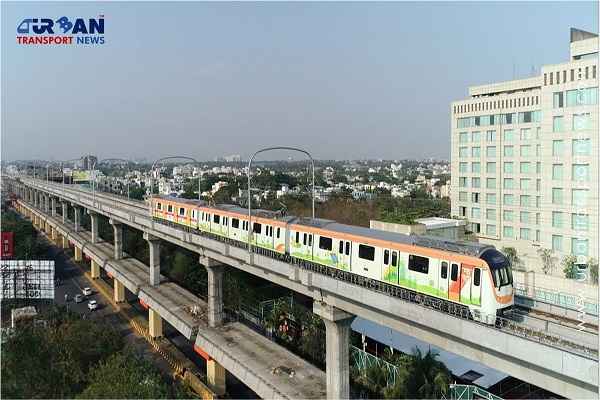Role of Management in creating Sustainable Development in India | Urban Transport News
Role of Management in creating Sustainable Development in India Urban Transport News


Role of Management in Creating Sustainable Development in India

This research paper is a topline review of the Role of Management in creating sustainable development in India. In this review, articles related to sustainable development in global and India had been reviewed from the source of multiple sources. This study found that there are only a few pieces of literature regarding the management of sustainable development in India and many of the SDGs were unexplored by the researchers. This research is concluded by identifying the SDGs of gender equality, reduction in inequality, peace, and justice, and responsible consumption and production as the most promising niches for future research in the area role of management approach and practices to ensure sustainable development in India.
Introduction
Development is a process of enlarging the range of people’s choices, increasing their opportunities for education, health care, income, and empowerment, and covering the full range of human choices from a sound physical environment to economic, social, and political freedom.
Unplanned development will inevitably lead to the depletion of resources and the destruction of the environment, the capital of humanity. Hence, the need to modify the traditional concept of development of the Public Transport system by associating it with sustainability, and the achievement of sustainable development has become the ultimate goal of the nations.
Sustainability is the foundation for today’s leading global framework for international cooperation and it is essential to address the requirement of stakeholders, the environment, global economics, business, individuals, and governments to achieve the overall goal for the benefit of the human. Sustainable development is the key to the overall prosperity of the world.
As per the former secretary-general of the UN, Mr. Ban Ki Moon –
Sustainable development is the pathway to the future we want for all. It offers a framework to generate economic growth, achieve social justice, exercise environmental stewardship, and strengthen governance.
The concept of Sustainable development is based on the following principles
- Integration of environmental and economic decision
- Stewardship or humans as the caretaker of the environment
- Shared responsibility, accountability, and decision making
- Prevention and mitigation
- Conservation Waste minimization
- Enhancement of productivity, capability, quality of nature, and human life
- Rehabilitation and reclamation
- Scientific and technological innovations
The principle of sustainable development (SD) also embodies a road map toward securing the present and future needs of the community and all mankind without compromising the ability of future generations to meet their needs. It does provide valuable ideas for the ideal utilization of the sources and sustaining them. The philosophy of sustainable development aims at providing for the needs of the current generation and developing its living conditions in a way that does not affect the needs of future generations.
The concept of sustainable development, although had appeared in the 1970s, was widely disseminated in the early 1980s by the ‘World Conservation Strategy’ (IUCN, UNE’P and WWF, 1980), which called for the maintenance of essential ecological processes; the preservation of biodiversity; and sustainable use of species and ecosystems.
The Sustainable Development Goals (SDGs), also known as the Global Goals, were adopted by the United Nations in 2015 as a universal call to action to end poverty, protect the planet, and ensure that by 2030 all people enjoy peace and prosperity.
Sustainable Development Goal (SDG)
- Goal 1: No Poverty: Eradicating poverty and ensuring equal access to resources and opportunities for all citizens.
- Goal 2: Zero Hunger: Working to end hunger, achieve food security, improve nutrition, and promote sustainable agriculture.
- Goal 3: Good Health and Well-being: Ensuring healthy lives and promoting well-being for all age groups.
- Goal 4: Quality Education: Ensuring inclusive and quality education for all, aiming to provide equitable access to education and lifelong learning opportunities.
- Goal 5: Gender Equality: Promoting gender equality and empowering women and girls to participate fully in all aspects of society.
- Goal 6: Clean Water and Sanitation: Ensuring access to clean water and proper sanitation for all citizens.
- Goal 7: Affordable and Clean Energy: Increasing the share of renewable energy in the energy mix and promoting energy efficiency.
- Goal 8: Decent Work and Economic Growth: Promoting sustainable economic growth, full and productive employment, and decent work for all.
- Goal 9: Industry, Innovation, and Infrastructure: Building resilient infrastructure, promoting inclusive and sustainable industrialization, and fostering innovation.
- Goal 11: Sustainable Cities and Communities: Making cities and human settlements inclusive, safe, resilient, and sustainable.
- Goal 12: Responsible Consumption and Production: Promoting sustainable consumption and production patterns and managing resources efficiently.
- Goal 13: Climate Action: Taking urgent action to combat climate change and its impacts.
- Goal 15: Life on Land: Protecting, restoring, and promoting sustainable use of terrestrial ecosystems, and halting biodiversity loss.
- Goal 16: Peace, Justice, and Strong Institutions: Promoting peaceful and inclusive societies, providing access to justice for all, and building effective, accountable, and inclusive institutions at all levels.
Indian Growth and Sustainable Development
India has reinforced the country’s belief in its economic resilience as it has withstood the challenge of mitigating external imbalances caused by the Russian-Ukraine conflict without losing growth momentum in the process. India’s stock markets had a positive return in CY22, unfazed by withdrawals by foreign portfolio investors. India’s inflation rate did not creep too far above its tolerance range compared to several advanced nations and regions.
India’s Real GDP growth projections by various agencies (percent)
| Agency |
2022 (Revised Estimates) |
2022 (Previous Estimates) SDGs, Targets, and Indicators1. Which SDGs are addressed or connected to the issues highlighted in the article?
2. What specific targets under those SDGs can be identified based on the article’s content?
3. Are there any indicators mentioned or implied in the article that can be used to measure progress towards the identified targets?Yes, the article mentions or implies several indicators that can be used to measure progress towards the identified targets. These include:
Table: SDGs, Targets, and Indicators
Behold! This splendid article springs forth from the wellspring of knowledge, shaped by a wondrous proprietary AI technology that delved into a vast ocean of data, illuminating the path towards the Sustainable Development Goals. Remember that all rights are reserved by SDG Investors LLC, empowering us to champion progress together. Source: urbantransportnews.com
Join us, as fellow seekers of change, on a transformative journey at https://sdgtalks.ai/welcome, where you can become a member and actively contribute to shaping a brighter future.
|








